شربت گیاهی
کاف استاپ باریج
اکسپکتورانت
ضد سرفه











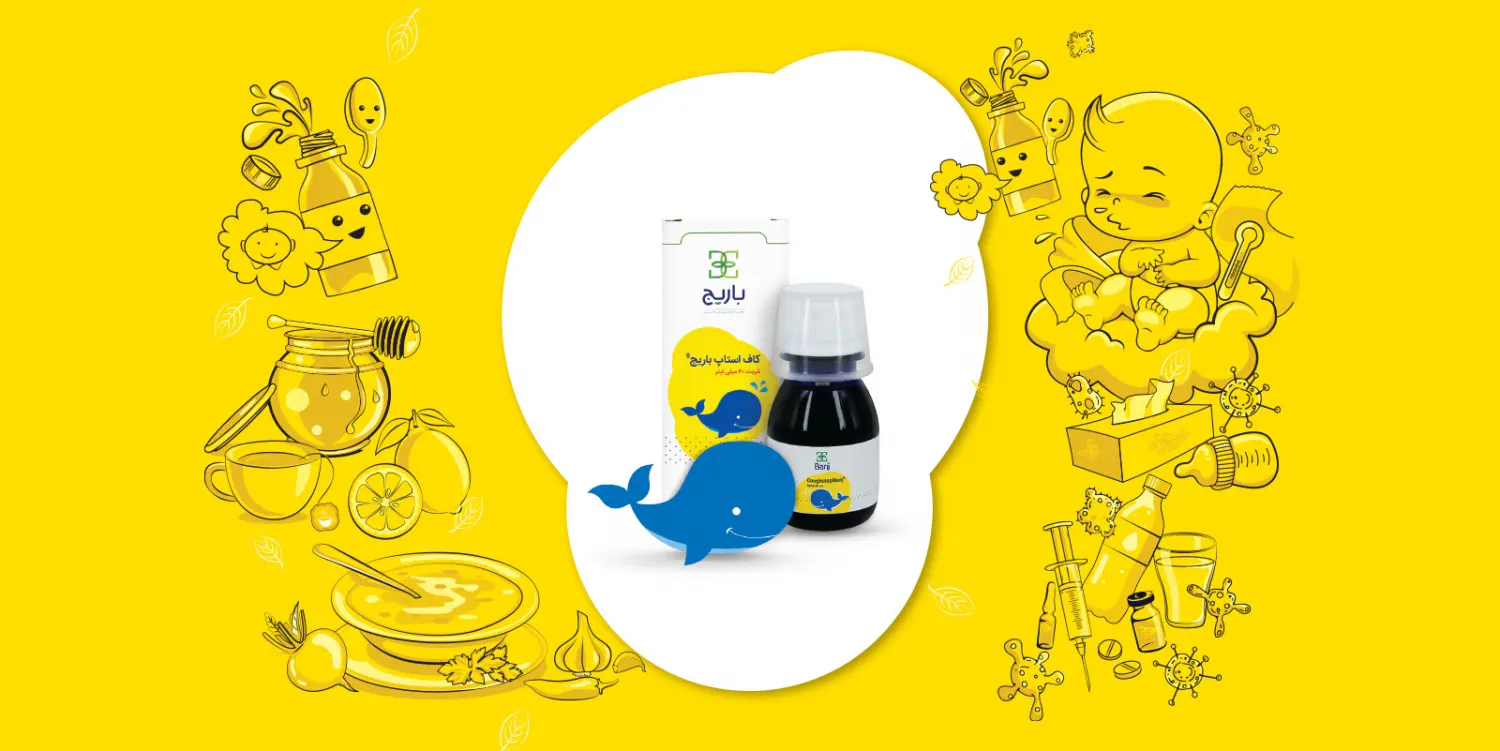
اکسپکتورانت و ضد سرفه
تشکیل شده از آویشن باغی و عشقه
شربت گیاهی
اکسپکتورانت
ضد سرفه











شربت 60 میلیگرم، همراه با قاشق و بروشور در جعبه مقوایی
آویشن باغی (Thymus Vulgaris)
عشقه (Hedera helix)
استویا (به عنوان شیرین کننده )
مواد مؤثره: تيمول، هدراکوزید C
بهصورت موردی شکایات دلپیچه، تهوع، استفراغ گزارش شده.
بهصورت نادر ممکن است واکنش آلرژیکشامل تنگی نفس، کهیر و تورم صورت، دهان و یا حلق همراه با بثورات جلدی رخ دهد.
این محصول فاقد شکر و الکل است.
کودکان سنین 1 تا 5 سال: روزانه 3 مرتبه، هر مرتبه 3/2 میلیلیتر
کودکان سنین 6 تا 11 سال: روزانه 3 مرتبه، هر مرتبه 4/3 میلیلیتر
افراد بالای 12 سال و بزرگسالان: روزانه 3 مرتبه، هر مرتبه 5 میلیلیتر
(کلیه داروها با تجویز پزشک باید مصرف شوند)
علل سرفه در کودکان
وقتی بچهها به سرفه کردن میافتند یعنی بدن سعی دارد تا از شر یک عامل تحریککننده و بیماریزا خود را خلاص کند. شایعترین علل سرفه در کودکان عبارتند از

بیماری: سرماخوردگی و آنفولانزا عمل اصلی ابتلا به سرفه در کودکان است. سرماخوردگی باعث ایجاد سرفه خفیف تا متوسط و آنفولانزا گاهی باعث سرفه شدید و خشک میشود. این دو بیماری ویروسی هستند و با آنتیبیوتیک درمان نمیشوند و فقط با دارو میتوان عوارض آن را کنترل کرد.
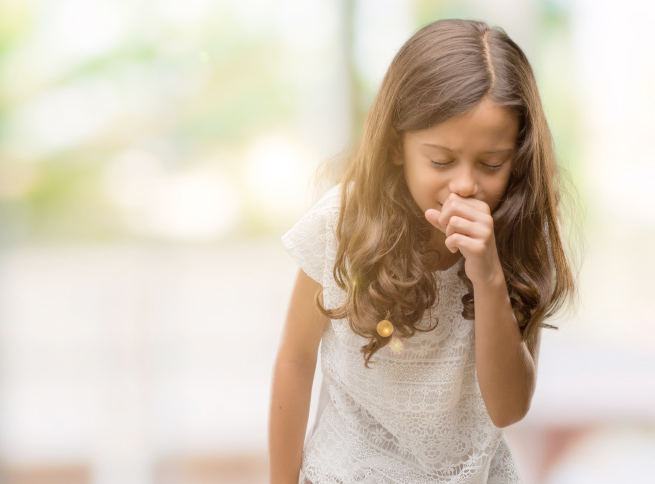
رفلکس اسید معده: علائم رفلاکس اسید معده در کودکان شامل سرفه، استفراغ مکرر، طعم بد دهان، سوزش سر دل که به صورت احساس سوزش در قفسه سینه خود را نشان میدهد. درمان رفلاکس به سن کودک ارتباط دارد. البته با مواردی نظیر حذف غذاهای تحریککننده (نظیر شکلات، غذاهای سرخشده و تند، غذاهای چرب و نوشیدنیهای گازدار)، کم کردن غذا دریافتی هر وعده و امساک (غذا نخوردن) به مدت دو ساعت پیش از خواب میتوان تا حد زیادی رفلاکس معده را کنترل کرد.
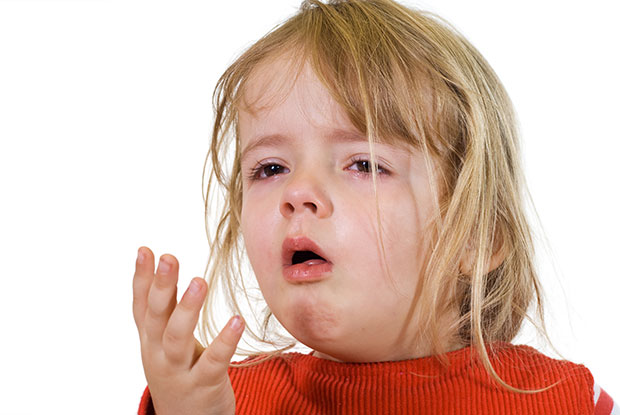
آسم: البته توجه داشته باشید، تشخیص آسم سخت است و باید با تشخیص پزشک باشد. البته سرفه خسخسدار سینه، که در شب بدتر میشود، یکی از علائم متعدد است.
آلرژی: آلرژی هم میتواند باعث سرفه طولانی مدت و همچنین خارش گلو، آبریزش بینی، آبریزش چشم، گلودرد یا بثورات پوستی (ضایعه پوستی) شود. با پزشک کودک خود در مورد آزمایشهای آلرژی صحبت کنید تا متوجه شوید کدام عوامل آلرژیزا باعث ایجاد مشکل میشوند. عوامل آلرژیزا یا آلرژنها میتوانند شامل غذا، گرده، شوره حیوانات خانگی و گرد و غبار باشند.
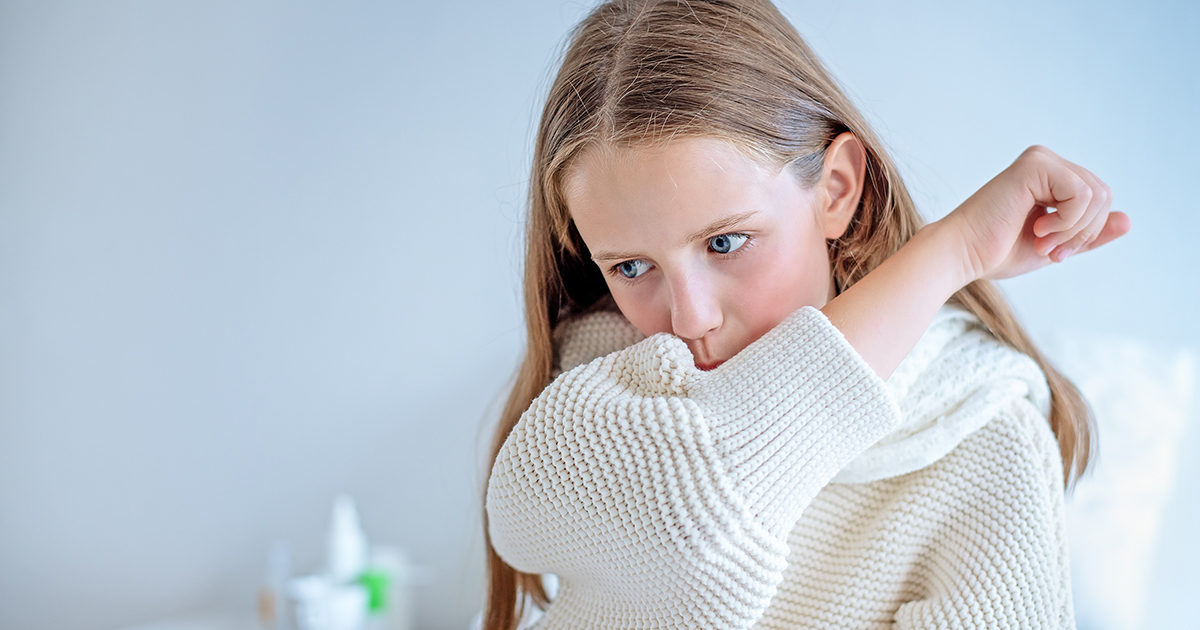
سیاه سرفه: سیاه سرفه یکی دیگر از عوامل سرفه در کودکان است. علامت اصلی سیاه سرفه، سرفههای پشت سر هم است. علائم دیگر ممکن است شامل آبریزش بینی، عطسه و تب پایین باشد. سیاه سرفه مسری است اما با واکسن به راحتی قابل پیشگیری است. سیاه سرفه با آنتی بیوتیک درمان میشود.
دلایل دیگر سرفه کودکان همچنین ممکن است کودک پس از ابتلا به سرفه، پس از استنشاق یک جسم خارجی مانند غذا یا یک اسباب بازی کوچک، یا پس از قرار گرفتن در اطراف عوامل محرک مانند آلودگی هوا و دود سیگار میتواند منجر به سرفه در کودک بشود.
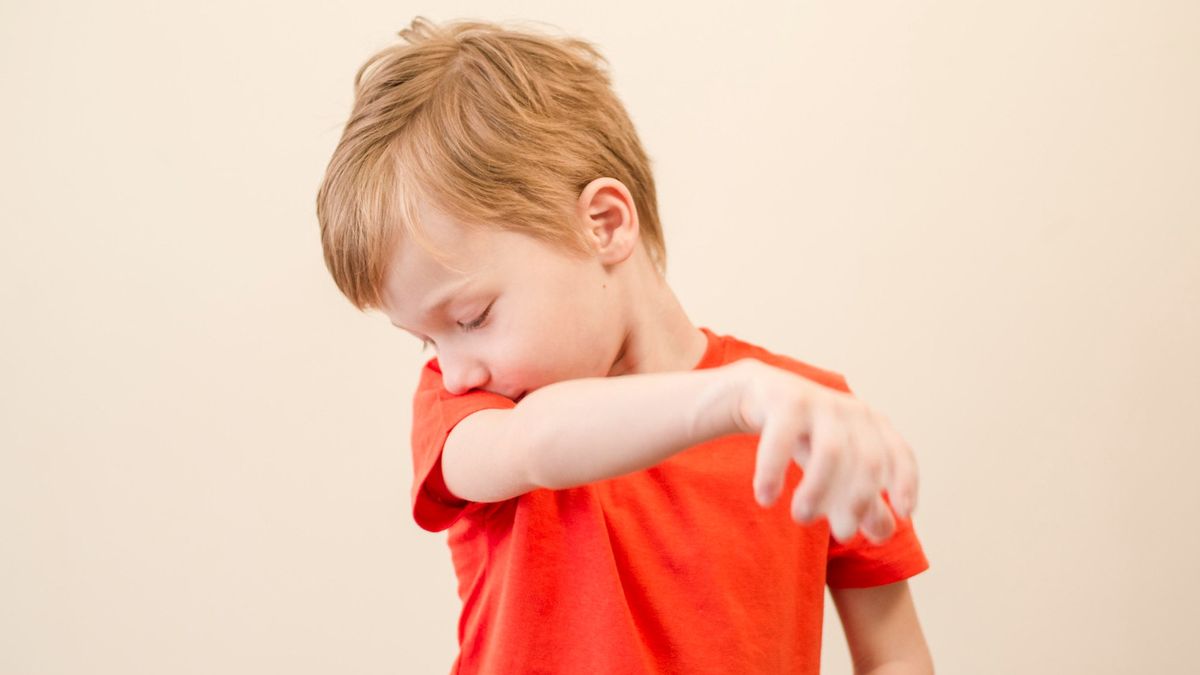
شربت کاف استاپ برای کدام بیماریها تجویز میشود؟
شربت کاف استاپ باریج برای درمان سرفه تجویز میشود. این شربت در واقع ضد سرفه کودک است.
طریقه مصرف شربت کاف استاب باریج چگونه است؟
طریقه مصرف شربت کاف استاب باریج بدین گونه است: برای کودکان سنین 1 تا 5 سال: روزانه 3 مرتبه، هر مرتبه 3/2 میلیلیتر. برای کودکان سنین 6 تا 11 سال: روزانه 3 مرتبه، هر مرتبه 4/3 میلیلیتر و برای
افراد بالای 12 سال و بزرگسالان: روزانه 3 مرتبه، هر مرتبه 5 میلیلیتر
داروها و مکمل های گیاهی عالی با مواد با کیفیت ساخته می شوند. در باریج اسانس، ما خلوص گیاهان، کنترل در روش های تأمین و کیفیت بی نظیر را تأیید می کنیم.
ما اعتقاد داریم که شما لیاقت این را دارید که دقیقاً بدانید در داروها و مکمل های شما چیست و چه مواردی غیر از گیاهان وجود دارد. در باریج، هر عنصر و محصول نهایی برای اطمینان از خلوص، کیفیت و قدرت در آزمایشگاه پیشرفته ما آزمایش می شود.
داروها و مکمل های گیاهی عالی با مواد با کیفیت ساخته می شوند. در باریج اسانس، ما خلوص گیاهان، کنترل در روش های تأمین و کیفیت بی نظیر را تأیید می کنیم.

 ژل دنتی کید باریج
ژل دنتی کید باریج
امنه –
سلام من این دارو رو برا پسر ۹ساله ام خریدم روز اول مصرف استفراغ کرد و روز سوم اطراف دهانش کهیر زد
باریج اسانس –
سلام.
احتمالا به اجزا فراورده حساسیت داشتن.
حتما با پزشک خود مطرح کنید.
ایمان خزاعلی –
من برای پسر 3 ساله ام تهیه کردم.چند ساعت بعد از مصرف دور دهان کهیر زد و صورت و گردن پسرم جوشهای بزرگ میزد که بعد زخم میشد.
باریج اسانس –
سلام.
ممکن است فرزندتان به اجزا فراورده حساسیت داشته. دارو را قطع کنید و با پزشک مشورت کنید.
لیلا –
سلام برای پسر ۱۵ماهم بجای ۲.۵سی سی ۵تادادم چیکارکنن
باریج اسانس –
سلام.
در صورتی که کودک علایم مسمومیت نشان داد حتما با پزشک مشورت کنید.
کمال –
دارو بعد از چند دقیقه آثر میکند
باریج اسانس –
از بهبودی و بازیابی سلامتی تون خرسندیم
ابراهیم –
سلام من به پسر دو سالم با دستور پزشک دادم عالی بود و شب اول سرفه هاش کمتر شد
باریج اسانس –
از درمان سرفه فرزندتون خوشحالیم و ممنون از به اشتراک گذاری نظرتون
سامین –
سلام من خیلی راضیم از این شربت سرساعت به بچم یک سالش تا ۳ روز دادم سرماخوردگیش کاملا خوب شد
باریج اسانس –
خوشحالیم کاف استاپ باریج برای درمان سرماخوردگی کودک تون مفید بوده